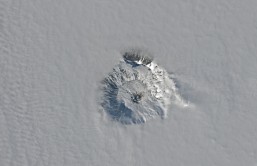Astronomers at Durham University have found a new way to explain the black hole phenomenon by measuring the distance between the inner edge of the disk and the hole to calculate its spin.
The findings were published in the Oxford University Press journal Monthly Notices of the Royal Astronomical Society. The researchers were able to use the measurements to then estimate the black hole's spin, according the a news release:
The team of astronomers observed a black hole - with a mass 10 million times that of our Sun - at the centre of a spiral galaxy 500 million light years from Earth while it was feeding on the surrounding disc of material that fuels its growth and powers its activity.
By viewing optical, ultra-violet and soft x-rays generated by heat as the black hole fed, they were able to measure how far the disc was from the black hole.
This distance depends on black hole spin as a fast spinning black hole pulls the disc in closer to itself, the researchers said. Using the distance between the black hole and the disc, the scientists were able to estimate the spin of the black hole.
Researchers say understanding the black whole spin may lead to a better understanding of galaxy growth over billions of years. Black holes can be found in the center of most galaxies, and are able to send out hot, high energy particles preventing "intergalactic gases from cooling and forming new stars in the outer galaxy," according to the news release.
Scientists are trying to understand why the particles are released in space, and the Durham team believes the power is linked to the black hole's spin. This spin is difficult to measure because its behavior of material really close to the black hole.
Lead researcher Professor Chris Done, in the Department of Physics, at Durham University, said in a statment:
We know the black hole in the centre of each galaxy is linked to the galaxy as a whole, which is strange because black holes are tiny in relation to the size of a galaxy. This would be like something the size of a large boulder (10m), influencing something the size of the Earth.
Understanding this connection between stars in a galaxy and the growth of a black hole, and vice-versa, is the key to understanding how galaxies form throughout cosmic time.
If a black hole is spinning it drags space and time with it and that drags the accretion disc, containing the black hole's food, closer towards it. This makes the black hole spin faster, a bit like an ice skater doing a pirouette.
By being able to measure the distance between the black hole and the accretion disc, we believe we can more effectively measure the spin of black holes.








